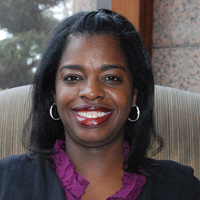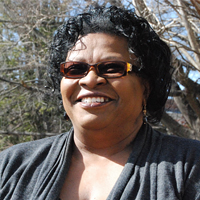Are You Saving Enough?
Take advantage of Duke's retirement benefits for financial security

Cassandra Taylor sat at her kitchen table with a notepad, budget spreadsheet and stack of quarterly retirement account statements at the ready. Her mission: squeeze more money out of her budget for retirement.
"I ran the numbers up and down and back and forth a couple of times, jotting down figures so I could compare scenarios," said Taylor, who has worked at Duke three years as a Duke Credit Union financial guidance counselor.
Read MoreAfter an evening of number crunching, Taylor concluded she could raise her monthly retirement contribution from 3 to 4 percent using the money she saves on fuel by commuting in a hybrid, not an SUV.
"It also meant pulling back on other items like eating out," she said, "but I am willing to forego some luxuries now in order to have a comfortable retirement later."
Taylor's decision to increase her retirement contribution bucks a national trend indicating that fewer people are saving for retirement. According to a January survey by the Employee Benefit Research Institute, U.S. workers are more pessimistic about their chances for a comfortable retirement. More than a quarter (27 percent) of 1,258 workers say they are "not at all confident" about retirement, up from 22 percent in 2009 and 2010, and the highest level ever measured in the 21-year history of the survey.
This belt-tightening is reflected at Duke with some faculty and staff putting away less in their retirement plans in recent years. Decisions like these have likely contributed to a majority of Americans saying they are either a little or far behind financially in preparing for retirement.
Financial experts recommend that any retirement plan include three components: social security, an employer's plan and an employee's personal savings. Combined, these components should replace between 75 and 85 percent of pre-retirement income to maintain the same standard of living during retirement. At Duke, faculty and staff can take advantage of Duke's retirement benefits to help them obtain this level of financial security.
"Even during challenging times, it is imperative that we each keep the goal of adequately contributing to our retirement savings as one of our highest priorities," said Kyle Cavanaugh, vice president for Duke Human Resources.
Taylor values Duke's contribution to her 403(b) retirement plan. "It's like free money," she said. But she won't let up on her goal to gradually increase her contribution from her monthly pay to the annual maximum of $16,500.
"If we get a raise this year, the first thing I'll do is check the payroll calculator on the HR website and see if I can afford to increase my contribution to 5 percent or maybe higher," she said. "I just feel it is imperative that I keep saving for retirement." Working@Duke offers a look at how five employees are planning for retirement:
Start early
Retirement is decades away for Kristen Lee, 31, but she's already planning for it.
"I'm at the time of my life when I need to figure out my long-term goals and dreams, and having a comfortable retirement is part of that," said Lee, a clinical trials specialist at the Duke Clinical Research Institute.
When Lee started working at Duke in 2002 after college, she was more focused on immediate financial goals. "I've seen some of my older relatives having a hard time making ends meet during retirement," she said. "I don't want to repeat some of those patterns."
As a bi-weekly paid employee, she is eligible for a pension through the Employees' Retirement Plan. But she knows she should save additional money. To start planning, Lee recently attended a Duke Credit Union seminar, where she learned about the power of time: the sooner one begins saving, the more time money has to grow.
By saving $44 from each paycheck from age 31 until retirement in an account that earns 5 percent interest, an employee can create a nest egg of $100,000. Waiting until age 40 to start saving means an employee will need to contribute approximately $78 from each paycheck to reach that same $100,000 goal.
Lee isn't contributing yet but wants to start saving $1,000 a year in Duke's Savings for Retirement Plan 403(b) account to help ensure she has sufficient retirement income to maintain her standard of living. "I know I need to get into the habit of saving more," she said.
Stick to your savings goals

"I was in my 30s and had one child," said Blandford, 42, director of alumni and development IT systems. "I realized I needed to get my financial house in order." Now, with two children progressing through elementary and middle school, Blandford faces a challenge of saving for college and retirement.
"I try to fund retirement first and college second, but I'm not putting as much as I think I should toward college," he said. Lynn Ball, a benefits specialist and former keynote speaker at Duke's Financial Fitness Week, said Blandford's dilemma is common.
"One of the hardest things for the average working person to do is to consistently put themselves first," she said. "But the reality is, reducing your contributions or dipping into your savings - even for your kid's sake - will make it hard to meet your retirement goals."
To help plan, Blandford scheduled a meeting with a Fidelity representative who works with Duke employees at no charge. "He assured me I was doing the right thing in making sure my wife and I are on track for retirement before saving for college," Blandford said.
Evaluate annually

Taylor remained in the market, and the experience taught her about tolerance for risk. "I can still be fairly aggressive in the market because I know I have plenty of years before retirement to make up any losses," said Taylor, 43.
Most financial advisors suggest investing more conservatively as individuals get older. This requires regularly monitoring your mix of investments to ensure it still reflects the amount of risk one is willing to tolerate, said Sylvester Hackney, associate director of Benefits at Duke.
"People shouldn't wait until there is a market crisis to evaluate their plans," Hackney said. "If they are afraid of the market, they might consider changing their investment strategy to something less risky but not reduce their savings rates. Saving something is always better than saving nothing."
To help employees set goals, Duke's five retirement vendors offer individual retirement consultations at no charge.
Know your retirement needs

"I learned to read the investment pages before I could legally drive," said Harper, 68, business manager for the Center for Cognitive Neuroscience. But now he spends as much time thinking about future expenses as he does investing.
"To really plan for retirement, you've got to know your lifestyle, what feeds your soul," he said. "Then you have to figure out the best way to afford it."Lynn Ball, the benefits specialist, said getting a clear picture of retirement costs is important for people within 10 to 15 years of retirement. "I advise people to take a good hard look at reality - no covering up the eyes like at a scary movie," she said.
Harper isn't in a hurry to retire, but he and his wife spend some evenings discussing retirement costs such as health insurance and home maintenance. They've also laid the groundwork for continuing activities they enjoy in retirement. "We have a lifetime National Park membership we expect to use a lot," Harper said.
It's never too late

"When I went to a retirement seminar last spring, it was a real eye-opener to realize how far I was from where I need to be when it comes to savings," said Jones, 54, a staff specialist in Alumni Affairs.
Jones devised a plan for the next decade to position herself for a more comfortable retirement. She found a seasonal part-time job, increased her contribution to the Duke Savings for Retirement Plan 403(b) account and vowed to meet regularly with a financial representative.
"I wish I had saved more when I was younger," she said. "But I'm putting as much back as I can into retirement now. I figure it is never too late to start saving more."